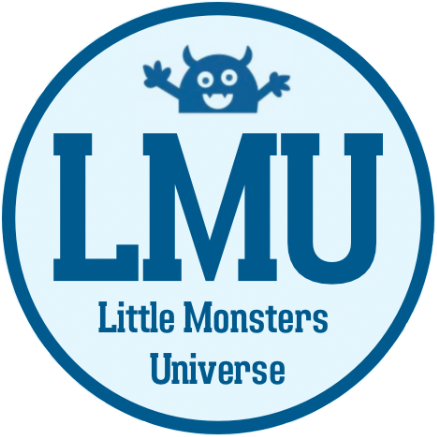In today’s rapidly changing world, it’s more important than ever to equip children with the skills they need to succeed. That’s where STREAM comes in.
STREAM, or Science, Technology, Reading, Engineering, Art, and Math, is a modern approach to education that integrates these critical subjects in a way that emphasizes hands-on, interdisciplinary learning. STREAM provides students with a unique opportunity to apply what they learn in real-world settings and help cultivate the critical thinking, problem-solving, and creative skills that are so essential in today’s rapidly changing world.
Each of the STREAM subjects brings a unique set of skills and perspectives to the learning experience:
- Science and engineering help students develop critical thinking and problem-solving skills
- Technology teaches them how to use digital tools and information
- Reading promotes literacy and communication skills
- Arts foster creativity and self-expression
- Mathematics provides a foundation for quantitative reasoning and analysis.
By combining these subjects, STREAM education provides a comprehensive and engaging learning experience that prepares students for a wide range of careers and challenges in the modern world.
Another benefit of STREAM is that it helps diminish the traditional barriers that often exist between subjects. By integrating science, technology, reading, engineering, art, and math, STREAM provides students with a more holistic view of the world, and helps them to understand the interconnected nature of these subjects.
This kind of interdisciplinary learning can be especially powerful, as it allows students to see how their studies in one subject can be applied in another, and can help them to gain a deeper appreciation for the subjects they are studying.
Let’s examine each subject.
Science In A STREAM Education
Science is the systematic examination of the natural world. It involves observing, hypothesizing, experimenting, and analyzing data to gain a deeper understanding of how things work and why things happen.
Young children possess a natural curiosity and are intuitive scientists, constantly exploring and asking questions about their surroundings. Through play and exploration, they make observations, form hypotheses, and conduct experiments to test their ideas.
For example, a child playing with objects in water may make observations about whether heavy or light objects sink or float. Based on these observations, they might form a hypothesis and then conduct experiments by dropping different items into the water to see if their hypothesis is correct. By participating in hands-on activities, children can develop critical thinking skills and deepen their understanding of science.
Technology In STREAM
Technology refers to the application of scientific knowledge to design and create tools, devices, and systems that solve problems and meet human needs. It encompasses not only electronic devices, but also simple tools such as pulleys, levers, wheels, ramps, and scissors.
Through hands-on exploration and experimentation with these tools, children can develop a fundamental understanding of how technology works and its role in daily life. By using these tools and observing the cause-and-effect relationship they have with their surroundings, children can see how technology can be used to accomplish tasks, such as drilling a hole in a tree to collect sap or using a magnifying glass to see more detail.
This early exposure to technology lays the foundation for future technological advancements and innovations.
Reading In STREAM
The “R” in STREAM stands for reading, which is an essential component of education that is often overlooked in discussions about STEM or STEAM. Reading is a foundational skill that supports learning across all subjects and disciplines. It promotes critical thinking, improves vocabulary and language skills, and enhances comprehension and communication abilities.
In STREAM education, reading is integrated with other subjects to provide students with a more comprehensive and engaging learning experience. For example, students might read and analyze scientific articles, technical manuals, or engineering diagrams to support their understanding of STEM concepts. Reading is also essential for promoting creativity and self-expression through literary and artistic works.
By emphasizing reading as a core component of STREAM education, students can develop the literacy skills necessary to succeed in school and beyond.
Engineering In STREAM
Engineering is a branch of science that involves the design and construction of structures, systems, and products to solve real-world problems. By combining the principles of mathematics, science, and technology, engineers develop innovative solutions that improve our lives.
 From a young age, children demonstrate a natural curiosity and creativity that lays the foundation for engineering. Through hands-on experiences, such as building with blocks, creating forts, or constructing tracks, children begin to understand how objects fit together and how to solve problems through design and construction.
From a young age, children demonstrate a natural curiosity and creativity that lays the foundation for engineering. Through hands-on experiences, such as building with blocks, creating forts, or constructing tracks, children begin to understand how objects fit together and how to solve problems through design and construction.
These playful activities help children develop important skills such as spatial reasoning, problem-solving, and critical thinking, which are crucial for a successful career in engineering. Encourage your child to explore their inner engineer and watch as they turn their imagination into reality!
Arts In STREAM
Art is a powerful expression of creativity and imagination. It transcends beyond just craft and encompasses a wide range of creative pursuits. At Little Monsters Universe, art plays an important role in the STEAM curriculum by fostering a sense of creativity and innovation.
By incorporating art into STEM, students are encouraged to think outside the box, focus on the creative process, and develop their powers of observation and spatial awareness. This unique approach to education not only helps students develop important life skills but also provides a fun and engaging learning experience that will stay with them for years to come.
Mathematics In STREAM
Mathematics is the systematic study of numbers, quantities, and shapes, and how they relate to each other and the real world. It encompasses a wide range of concepts, from pattern recognition and sequencing, to exploring shapes, measurements, and spatial relationships.
Early childhood is a crucial time for children to develop a foundation in mathematical concepts, and it can happen through everyday activities and play. Games, building with blocks, playing with kitchen toys, and outdoor play all provide opportunities for children to engage with mathematical ideas such as counting, size, measurement, and spatial relationships.
By encouraging and fostering these experiences, you can help your child develop a strong foundation in mathematics and lay the groundwork for more advanced math and science skills in the future.
How can you provide a STREAM education for your learners?
There are many ways to get involved in STREAM, from participating in after-school programs to joining a local STEM club. You can also encourage your child to explore STREAM through hands-on activities, such as building robots or creating digital art. And, of course, you can always explore the STREAM curriculum offered by Little Monsters Universe, which has been designed to emphasize the connections between these subjects and the real world.
In conclusion, STREAM is a powerful and innovative approach to education that is helping to prepare students for the challenges of the future. By integrating science, technology, engineering, art, and math, STREAM provides students with a unique and engaging learning experience that encourages critical thinking, creativity, and problem-solving. So if you’re looking for a way to help your child succeed in school and beyond, consider STREAM!
References
“Next Generation Science Standards.” Next Generation Science, nextgenscience.org/.
Marín-Marín, JA., Moreno-Guerrero, AJ., Dúo-Terrón, P. et al. STEAM in education: a bibliometric analysis of performance and co-words in Web of Science. IJ STEM Ed 8, 41 (2021). https://doi.org/10.1186/s40594-021-00296-x
“The History and Importance of STEAM Education.” Steam Truck, steamtruck.org/blog/steam-education-history-importance, 3 Aug. 2020.



